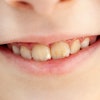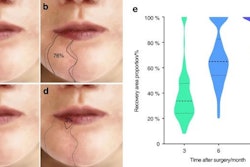
Genetic and environmental factors play a joint role in the formation of cleft lip or palate in developing fetuses, suggest findings published on May 24 in Nature Communications.
Dr. Roberto Mayor of University College London and a team of researchers have revealed that the combined effects of genes and inflammatory risk factors experienced during pregnancy, such as smoking or infections, may lead to neural crest cells not developing properly, in turn causing cleft lip or palate.
The team studied families that carry mutations in the e-cadherin gene, which is known to be implicated in the formation of a cleft lip. They reproduced the mutation in mice and frogs and found that cleft lip or palate only developed when environmental factors were also introduced. The researchers also discovered similar effects in human stem cells with mutation and inflammation.
The e-cadherin protein acts as a glue for embryonic neural crest cells to migrate together to form the face while the fetus develops. If the neural crest cells do not fully bind together, the infant may be born with a cleft lip or palate.
The researchers suggested that the mutation identified in the study reduces e-cadherin production. However, the mutation by itself does not necessarily mean babies will be born with cleft lip or palate.
The team also suggested that a cleft lip or palate can form when a fetus carrying the mutation is also exposed to environmental factors such as smoking, stress, malnutrition, or infections. According to the researchers, when these conditions were present, DNA methylation increased, and e-cadherin levels were too low for the neural crest cells to bind themselves together.
The researchers said their findings may contribute to new treatments or preventive strategies for cleft lip or palate. They added that the findings could help clarify risk factors to help expecting parents reduce the odds that their baby will develop the condition.



















